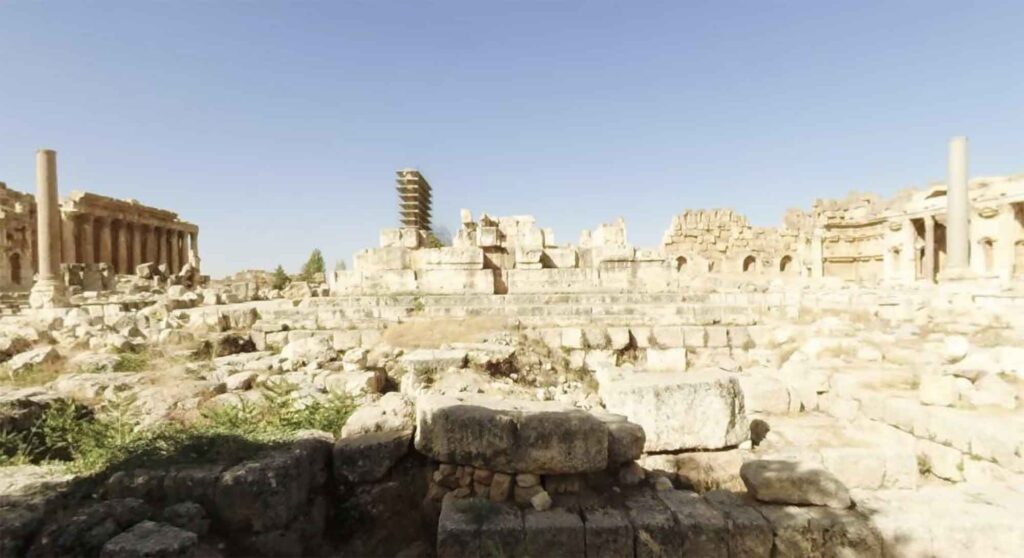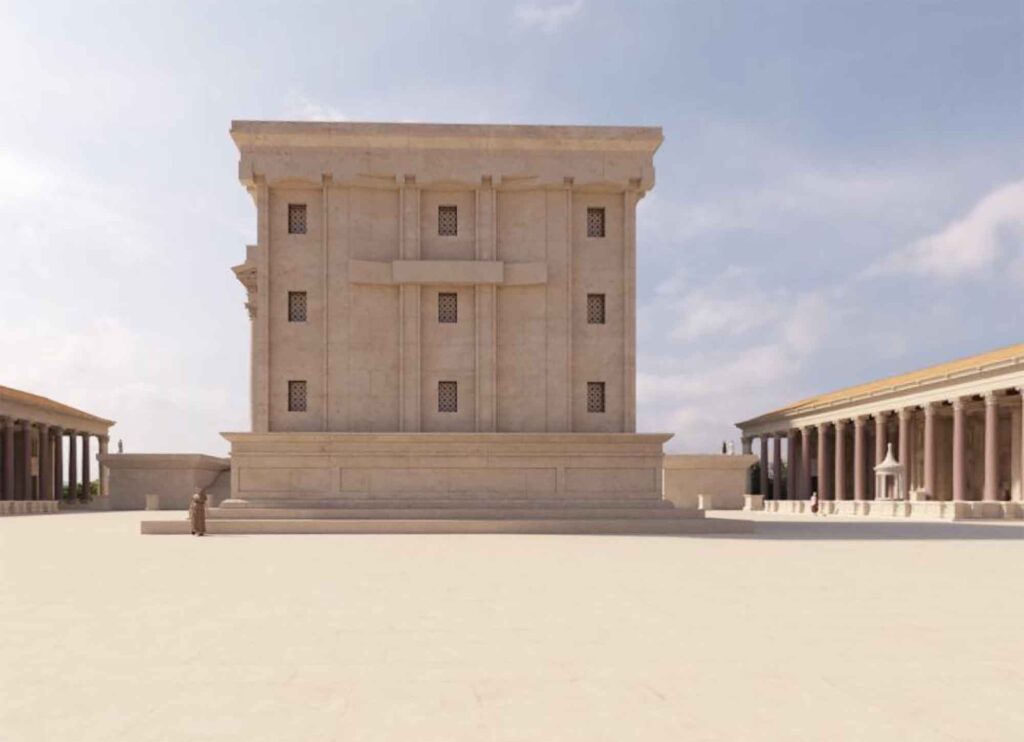Read, hot & digitized: Librarians and the digital scholarship they love — In this series, librarians from UTL’s Arts, Humanities and Global Studies Engagement Team briefly present, explore and critique existing examples of digital scholarship. Our hope is that these monthly reviews will inspire critical reflection of and future creative contributions to the growing fields of digital scholarship.
“Baalbek Reborn” is a groundbreaking virtual experience offering free access to users worldwide. Utilizing cutting-edge digital technologies and insights gleaned from decades of archaeological research, the project presents 3D reconstructions showcasing the appearance of Baalbek’s ruins during the 3rd century CE. These reconstructions notably feature prominent structures of the Baalbek temple complex.


Nestled in the Biqā’ valley in Lebanon, northeast of Beirut, Baalbak is an ancient city that flourished as an agricultural and religious center for thousands of years. It is best known for its Roman temple complex, which was called Heliopolis after the Greek for “City of the Sun.” The complex has three temples honoring the Triad of Heliopolis: Jupiter, Bacchus, and Venus, and the city flourished repeatedly under different religious groups’ administration because of its temple architecture. Baalbek remained a significant outpost through Antiquity and the Islamic imperial period, sometimes dramatically changing hands over the course of only months. As Europeans became acquainted with the city in the early modern period, their focus was––and has continued to be––on the remarkable ancient architecture of the temple complex. While the ancient Roman architecture is certainly significant, it is worth remembering that modern archaeologists cleared the Islamic town––which would have featured historic architecture as well––that had been built on the site in order to access the temples. The inclusion of Baalbek as a UNESCO World Heritage Site underscores its significance.
The Baalbek Reborn collaborative project enhances accessibility to the site’s cultural heritage by offering a dynamic virtual exploration of its past and present beauty. Available as a free app for computers, mobile devices, and virtual reality headsets, the “Baalbek Reborn” tour provides interactive, 360-degree views of 38 locations within the city. Users can engage with expert audio commentary in Arabic, English, French, or German, and access additional images and text for detailed information about specific spots. One unique feature is the ability to toggle between the present-day appearance of the buildings and their historical reconstruction from nearly 2,000 years ago. The high resolution of both the photographs and reconstructions allows users to zoom in without losing clarity, while informative text and audio clips provide detailed explanations based on research.
Upon starting the app, users are treated to a five-minute introduction to the site, along with basic instructions on how to navigate the virtual experience. For those seeking a more comprehensive understanding, a detailed tutorial is available for the app’s features. The app offers two main modes of exploration: a guided tour lasting 38 minutes, highlighting the key features of the Baalbek temples, or the option to explore points of interest directly from the map of the temple complex. It is the latter option that some users may find rather disjointed: it is not easy to move seamlessly between points of interest. However, those who wish to explore further are encouraged to view the ruins on Google Streetview for a virtual walk, albeit without the detailed commentary provided in the app.
The collaborative effort behind this endeavor involved three key partners: Flyover Zone Productions, a virtual tour company responsible for the platform’s development; members of the German Archaeological Institute, who contributed content and provided archaeological expertise; and Lebanon’s Ministry of Culture – Directorate General of Antiquities, which oversees the protection, promotion, and excavation activities related to the country’s national heritage sites. Together, these partners have combined their expertise to create a comprehensive and immersive experience that brings the ancient beauty of Baalbek to contemporary audiences.
For further reading in the UT Libraries’ collections, consider the following scholarship:
- On the history of Baalbek: Naṣr Allāh, Ḥasan. 1984. Tārīkh Baʻlabakk. Bayrūt, Lubnān: Muʼassasat al-Wafāʼ.
- Baalbek in the French mandate period: Zayn al-Dīn, ʻĪdā. 2005. al-Taṭawwur al-iqtiṣādī wa-al-ijtimāʻī wa-al-siyāsī li-madīnat Baʻlabakk fī ʻahd al-intidāb al-Faransī, 1920-1943. Bayrūt: Dār al-Fārābī.
- Ottoman archaeology of Baalbek: Bahrani, Zainab, Zeynep Çelik, and Edhem Eldem. 2011. Scramble for the Past: A Story of Archaeology in the Ottoman Empire, 1753-1914. Istanbul: SALT.
- On a Muslim’s scholars experience of the ruins of Baalbek: Shafir, Nir. 2022. “Nābulusī Explores the Ruins of Baalbek: Antiquarianism in the Ottoman Empire during the Seventeenth Century.” Renaissance Quarterly 75 (1): 136–84. https://doi.org/10.1017/rqx.2021.332.
- Baalbek in antiquity: Paturel, Simone. 2019. Baalbek-Heliopolis, the Bekaa, and Berytus from 100 BCE to 400 CE: A Landscape Transformed. Mnemosyne, Supplements; v.426. Leiden: Brill.



